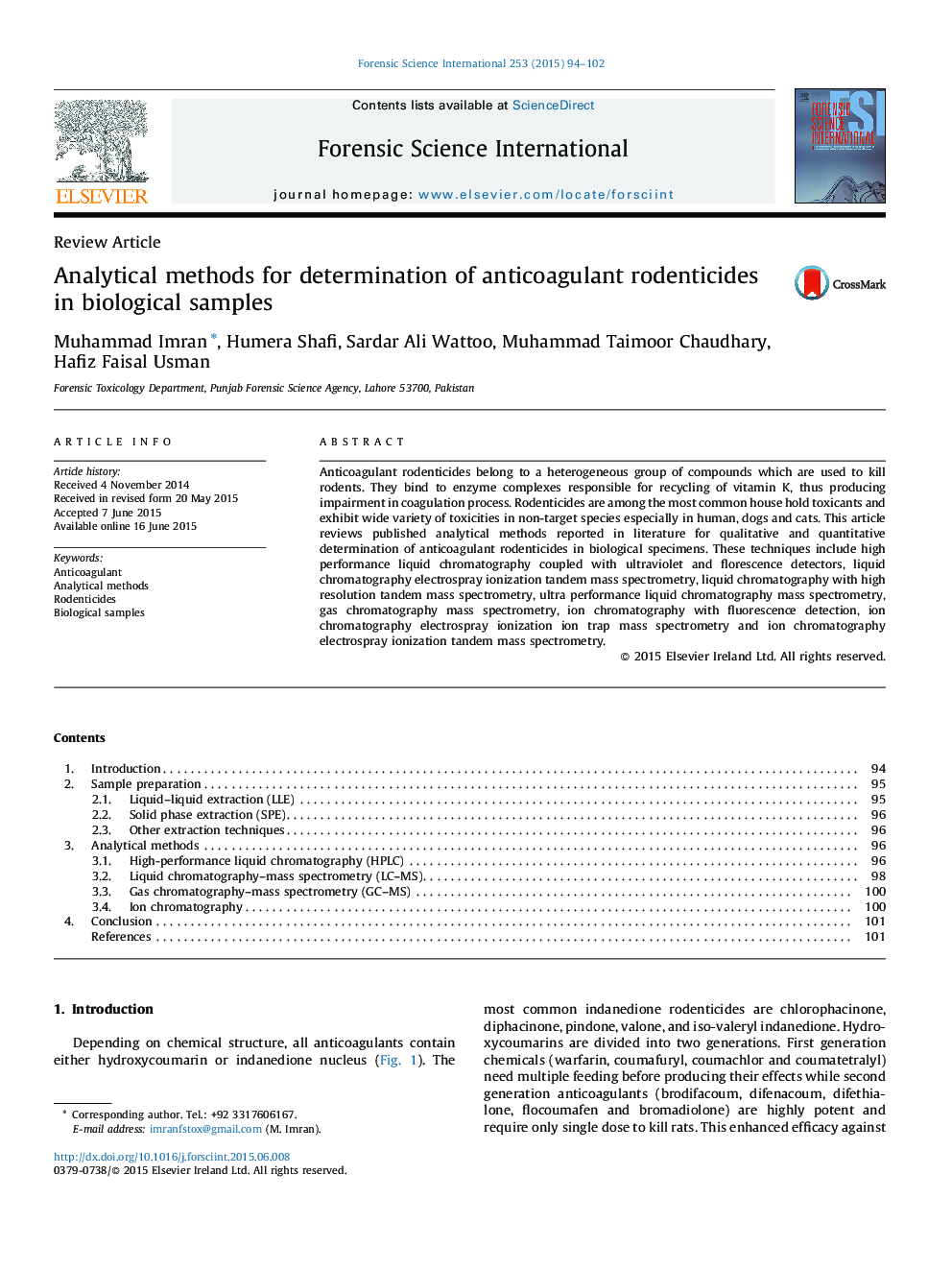| Article ID | Journal | Published Year | Pages | File Type |
|---|---|---|---|---|
| 95251 | Forensic Science International | 2015 | 9 Pages |
•Analytical methods for anticoagulant rodenticides in biological matrices are reviewed.•Blood is the sample of choice for analysis of rodenticides in antemortem cases.•Liver is the tissue of choice in postmortem cases for analysis of rodenticides.•LC–MS and LC–MS/MS have high sensitivity for simultaneous analysis of various rodenticides.
Anticoagulant rodenticides belong to a heterogeneous group of compounds which are used to kill rodents. They bind to enzyme complexes responsible for recycling of vitamin K, thus producing impairment in coagulation process. Rodenticides are among the most common house hold toxicants and exhibit wide variety of toxicities in non-target species especially in human, dogs and cats. This article reviews published analytical methods reported in literature for qualitative and quantitative determination of anticoagulant rodenticides in biological specimens. These techniques include high performance liquid chromatography coupled with ultraviolet and florescence detectors, liquid chromatography electrospray ionization tandem mass spectrometry, liquid chromatography with high resolution tandem mass spectrometry, ultra performance liquid chromatography mass spectrometry, gas chromatography mass spectrometry, ion chromatography with fluorescence detection, ion chromatography electrospray ionization ion trap mass spectrometry and ion chromatography electrospray ionization tandem mass spectrometry.
